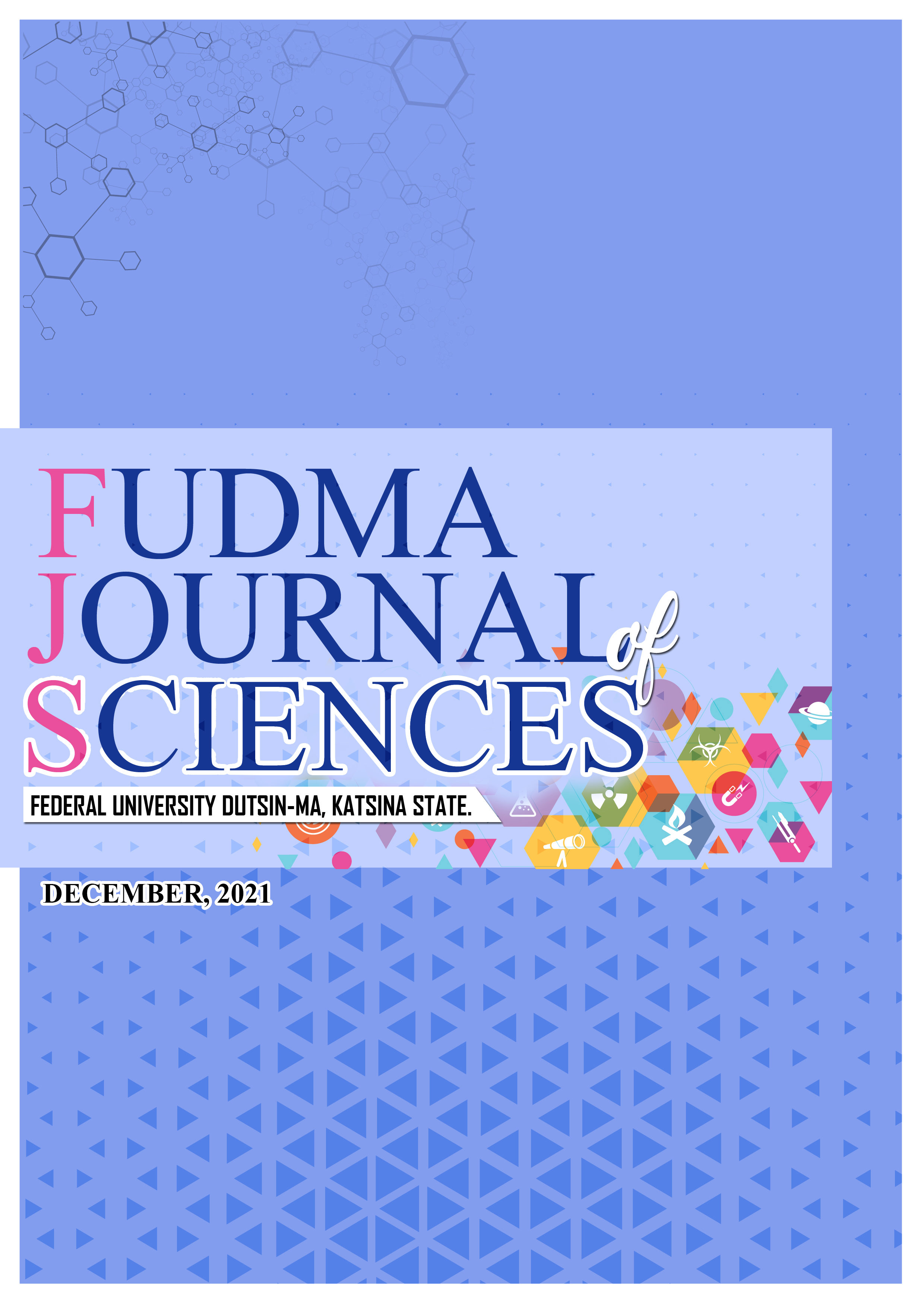GROUNDWATER POTENTIAL INVESTIGATION USING 1-D ELECTRICAL RESISTIVITY TECHNIQUE AT NIGER STATE POLYTECHNIC ZUNGERU, ZUNGERU MAIN CAMPUS, NIGER STATE, NIGERIA
DOI:
https://doi.org/10.33003/fjs-2021-0504-825Keywords:
Aquifer, Electrode, Groundwater, ResistivityAbstract
Electrical resistivity method employing vertical electrical sounding was carried out with aim to investigate groundwater potential at Niger State Polytechnic, Zungeru, Niger State. Ten points were selected at different locations within the campus for vertical electrical sounding (VES), using Schlumberger protocol. Maximum current electrodes separation (AB) of 120m was used. The investigation was carried out using Terrameter PE 02 SAS 300 system. The survey was able to investigate groundwater potential of the area. The IPI2win software was used for data analysis. The geologic section derived from geoelectric parameters revealed three subsurface layers. The first layer is interpreted as topsoil, the second layer is inferred to be weathered rock, while the third layer probably could be fresh basement rock. The thickness of the superficial cover is averagely 2.49m, and the depth to the basement is between 5.2m to 22.9m, the aquifer thickness ranges between 1.67 to 21.1m. The laterite in the second layer shown in some locations is of great importance as it reduces surface run off and aids infiltration into the underlying aquifer. The thickness of the aquifer component in the north-southern half of the study area is large enough to harbour substantial quantity of water. Areas around ZUN 01 and ZUN 05 could be potential areas for groundwater exploration. In this research, the depth to bedrock and aquifer thickness were determined, lithological formations within the overburden were delineated and approximate depths
References
Chand, R., Chandra, S., Rao, V. A., Singh, V. S. & Jain, S. C. (2004). Estimation of natural recharge and its dependency on sub-surface geoelectric parameters. Journal of Hydrology, 299 (1-2), 67-83.
De Lima, O. A. L., & Niwas, S. (2000). Estimation of hydraulic parameters of shaly sandstone aquifers from geoelectrical measurements. Journal of hydrology, 235(1-2), 12-26.
Dhakate, R., Singh, V.S., (2005). Estimation of hydraulic parameters from surface geophysical methods, Kaliapani Ultramafic Complex, Orissa, India. Journal of Environmental Hydrology, 13 (12), 1-11.
Frohlich, R. K., Fisher, J. J. And Summerly, E., (1996). Electric-hydraulic Conductivity Correlation infractured Crystalline Bedrock: central landfill, Rhode Island, USA. Journal of Applied Geophysics, Vol. 35: pp. 249-259.
Hard, T. N., (2009). Geoelectrical investigation of the acquifer characteristics and groundwater potential in Benbaban Azad University farm, Khuzestan Province, Iran. Journal of Applied Sciences, ISSN 1812-5654, Asian Network for scientific Information.
Keary, P. and M. Brooks (1992). An introduction to exploration geophysics. Blackwell series, London.
Khalil, M.H., (2006). Geoelectric resistivity sounding for delineating salt water intrusion in the Abu Zanima area, west Sinai, Egypt. Journal of Geophysics and Engineering 3, 243–251.
Louis, I., Karantonis, G., Voulgaris, N. and Louis, F. (2004). Geophysical methods in the determination of aquifer parameters: the case of Mornos river delta, Greece. Research Journal of Chemistry and Environment, 18(4): 41-49.
Muchingami, I., Nel, J., Xu, Y., Steyl, G., & Reynolds, K., (2013). On the use of electrical resistivity methods in monitoring infiltration of salt fluxes in dry coal ash dumps in Mpumalanga, South Africa. Water SA, 39(4), pp. 491-498.
Mufid Al-Hadithi D. C., Israil, M. & Kumar, B. (2006). Groundwater recharge estimation using a surface electrical resistivity method in the Himalayan foothill region, India. Hydrogeology Journal, 14(1):44-50.
Niwas, S., and De Lima, O. A. L. (2003). Aquifer parameter estimation from surface resistivity data. Groundwater 41(1):94–99.
Telford, W. M., Geldart, L. P. & Sherif, R. E. (1990). Applied geophysics, volume 1. Cambridge University Press.
United States Environmental Protection Agency (USEPA), Use of Airborne, Surface, and Borehole Geophysical Techniques at Contaminated Sites - A Reference Guide, Office of Research and Development, EPA/625/R-92/007, 1993.





